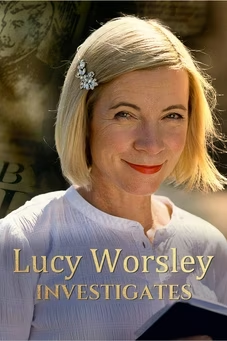
Black Loyalists: Fighting for Freedom
Episode 8 | 3m 20sVideo has Closed Captions
Black Loyalists seek freedom at Gwynn’s Island amid war, disease, and their fight for hope.
In 1776, hundreds of formerly enslaved men joined Lord Dunmore’s British forces on Gwynn’s Island, seeking freedom through war. Stricken by smallpox and starvation, they endured fierce cannon fire from Patriot troops under General Andrew Lewis. The British were forced to retreat, making a pivotal turn in the conflict and a huge moment in Virginia’s Revolutionary War history.
Problems playing video? | Closed Captioning Feedback
Problems playing video? | Closed Captioning Feedback
Revolution 250: Stories From The First Shore is a local public television program presented by WHRO Public Media

Black Loyalists: Fighting for Freedom
Episode 8 | 3m 20sVideo has Closed Captions
In 1776, hundreds of formerly enslaved men joined Lord Dunmore’s British forces on Gwynn’s Island, seeking freedom through war. Stricken by smallpox and starvation, they endured fierce cannon fire from Patriot troops under General Andrew Lewis. The British were forced to retreat, making a pivotal turn in the conflict and a huge moment in Virginia’s Revolutionary War history.
Problems playing video? | Closed Captioning Feedback
How to Watch Revolution 250: Stories From The First Shore
Revolution 250: Stories From The First Shore is available to stream on pbs.org and the free PBS App, available on iPhone, Apple TV, Android TV, Android smartphones, Amazon Fire TV, Amazon Fire Tablet, Roku, Samsung Smart TV, and Vizio.
Providing Support for PBS.org
Learn Moreabout PBS online sponsorship(water sloshing) (expansive music) - [Narrator] In the northeast end of Mathews County is a small piece of land known as Gwynn's Island.
According to historic accounts, the island was purchased by one of the first English settlers, a man by the name of Hugh Gwynn, in 1642.
But it wasn't until late May of 1776 that it became a camp for several hundred once enslaved Black men who would soon get their first taste of war as British soldiers.
- Williamsburg became unsafe for Governor Dunmore, who was the last royally appointed governor of Virginia at the time of the American Revolution.
And another reason they were here was they were hoping to outlast a smallpox outbreak that had started here in Virginia within the British camps.
- [Narrator] Lord Dunmore had hoped that the four-mile-wide island would give his troops room and time to recover.
Upon their arrival, Dunmore's forces numbered about 600.
It's estimated that about half of them were Black.
But according to one of Dunmore's captains, only about 1/3 of his soldiers were healthy enough to engage in battle.
The majority had contracted smallpox, and several other unknown diseases were all running rampant through this group of Loyalists.
For over a month, the soldiers who could set up camp on the island or manned the ships stationed in the Chesapeake Bay protecting the island.
- There were a number of different enslaved individuals on this island, as well as Dunmore's Ethiopian regiment, which was tasked with fortifying the encampments on this bank of the island, which faced the rest of Virginia, where there was Patriot militia watching and waiting for Dunmore's next movements.
- [Narrator] Meanwhile, Lord Dunmore was trying to figure out how to ration the island's dwindling freshwater supply.
However, a second deadly fever quickly swept through the Ethiopian regiment, leaving just 150 survivors.
It was Patriot General Andrew Lewis who realized that only heavy artillery would force Dunmore to leave Gwynn's Island.
- One, two, three.
Fire.
(cannons cracking) - [Narrator] On July 9th at 8:00 a.m., Lewis opened fire with large, powerful cannons, (patriotic music) smashing Loyalist ships and wounding soldiers.
By late afternoon, Loyalist ships had moved out of range, deep into the Chesapeake Bay, leaving behind many sick and dying Black Loyalists.
The survivors would continue on under Lord Dunmore's command, holding onto the hope of eventual freedom.
In the end, most would eventually connect with the thousands of Black Loyalists in New York who would eventually relocate to Nova Scotia and build communities, where their descendants still live today.
(patriotic music continues) (regal music) - This has been "Revolution250: Stories from the First Shore."
To learn more about this and other events of the Revolutionary age of America, visit whro.org/usa250.
(no audio)
Support for PBS provided by:
Revolution 250: Stories From The First Shore is a local public television program presented by WHRO Public Media















